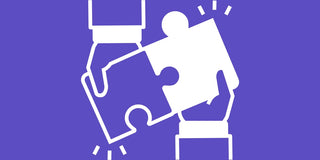Introduction
In a significant move to enhance the quality of education and align with the National Education Policy (NEP) 2020, the Central Board of Secondary Education (CBSE) has announced the introduction of two-tier difficulty levels for science and social science subjects in Class 9, starting from the academic session 2026-27. This initiative aims to provide students with the option to choose between standard and advanced levels, catering to their individual learning needs and better preparing them for future academic challenges.
Key Highlights of the Two-Tier System
-
Two Difficulty Levels
-
Standard Level: Designed for students who prefer a more straightforward approach to learning, focusing on fundamental concepts and basic applications.
-
Advanced Level: Aimed at students who seek a deeper understanding of the subjects, with more complex questions and higher-order thinking skills.
-
-
Implementation Timeline
-
The two-tier system will be introduced in Class 9 from the academic session 2026-27.
-
The first batch of students to experience this system will appear for their Class 10 board exams in 2028.
-
-
New Textbooks
-
The National Council of Educational Research and Training (NCERT) has been tasked with developing new textbooks for science and social science subjects.
-
These textbooks will include additional sections for the advanced level, ensuring comprehensive coverage of both difficulty levels.
-
-
Pilot Program
-
A pilot program is being conducted in 30 schools to assess the response to the two-tier system.
-
These schools will internally assess students at both levels based on their choice, providing valuable insights for the full-scale implementation.
-
Benefits of the Two-Tier System
-
Personalized Learning
-
The two-tier system allows students to choose the difficulty level that best suits their learning style and academic goals.
-
This personalized approach helps students build confidence and achieve better learning outcomes.
-
-
Preparation for Competitive Exams
-
The advanced level is designed to better prepare students for competitive exams like the Joint Entrance Examination (JEE) by providing a more rigorous academic foundation.
-
This reduces the need for external coaching classes, as the school curriculum will be more aligned with entrance exam requirements.
-
-
Enhanced Learning Experience
-
By offering two levels of difficulty, the CBSE aims to make learning more engaging and challenging for students.
-
This approach encourages critical thinking, problem-solving, and higher-order cognitive skills.
-
-
Alignment with NEP 2020
-
The introduction of the two-tier system aligns with the recommendations of the NEP 2020, which advocates for flexible and holistic education.
-
This initiative supports the broader goals of the NEP 2020, promoting a more inclusive and student-centric education system.
-
Implications for Students and Educators
-
Choice and Flexibility
-
Students will have the flexibility to choose the difficulty level for science and social science subjects, allowing them to tailor their learning experience to their strengths and interests.
-
Educators will need to adapt their teaching methods to cater to both levels, ensuring that all students receive the support they need to succeed.
-
-
Assessment and Evaluation
-
The CBSE will develop new assessment and evaluation methods to accurately measure student performance at both levels.
-
This may include separate question papers for standard and advanced levels or a single paper with additional questions for the advanced level.
-
-
Professional Development for Teachers
-
Teachers will require professional development and training to effectively implement the two-tier system.
-
The CBSE and NCERT will provide resources and support to help educators adapt to the new curriculum and assessment methods.
-
Conclusion
The introduction of two-tier difficulty levels for science and social science subjects in Class 9 by the CBSE marks a significant step towards enhancing the quality of education and aligning with the NEP 2020. By offering students the choice between standard and advanced levels, this initiative aims to provide a more personalized and engaging learning experience, better preparing them for future academic challenges. As the education system evolves, the two-tier system promises to create a more inclusive and student-centric environment, fostering a love for learning and academic excellence.

















